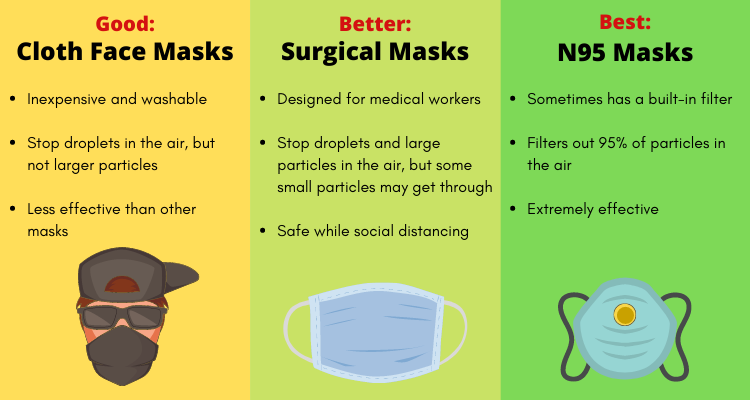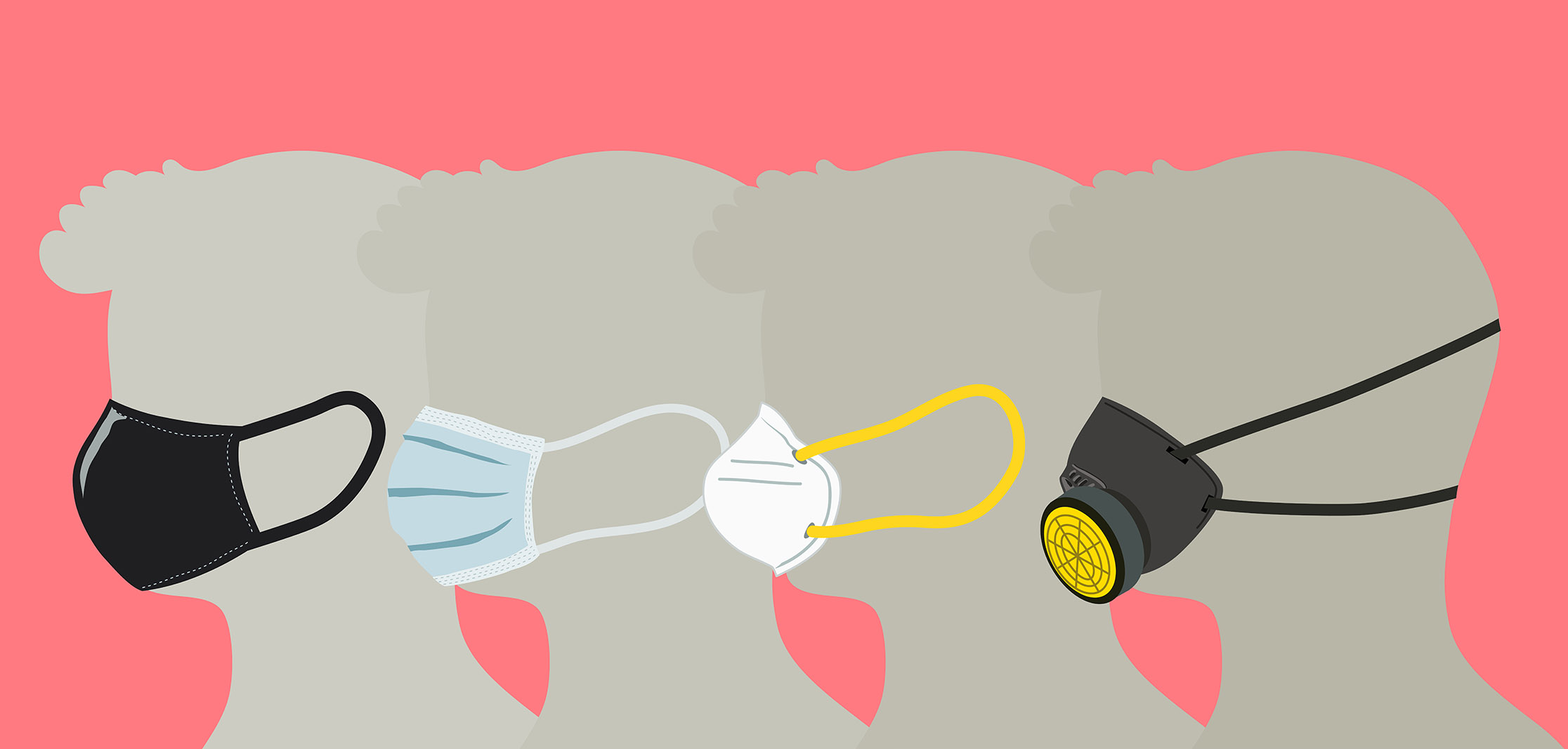Since nearly the beginning of the COVID-19 pandemic, the CDC has identified three primary tactics that ordinary people can employ in their day-to-day lives to help stop the spread of the deadly disease. These are social distancing, hand washing, and wearing a mask in public. While many Americans seem to be struggling to adopt these lifestyle changes, the recommendation of wearing a mask has been the most controversial. Part of this may be due to the WHO and CDC initially doubting the effectiveness of face masks during the early days of the virus. As more data about the new disease emerged, they quickly reversed this position.
Opponents of the mask mandates argue that being compelled to wear a mask in public infringes on their freedoms, while ignoring the fact that their refusal infringes on others’ right to life. Many falsely believe that they aren’t contagious because they don’t have symptoms, or that the masks aren’t effective. However, all reliable data indicates that this is not the case.
The data on how masks work
Several studies over the course of the year have confirmed that states with more strict rules in place regarding masks are seeing a much slower increase in cases of COVID-19 than states with more relaxed rules regarding masks. In June, the 11 states that required wearing a mask in public saw a 25% decrease in cases, while states that only required masks for certain workers saw an average increase of 70% in their number of cases.
The masks work by blocking the tiny droplets of saliva and other particles that float through the air whenever we cough, sneeze, or talk. By containing these germs at their source, it helps to prevent people from spreading COVID-19 to others in close proximity to them. This makes masks better at protecting those who come in contact with the wearer, rather than the wearer themselves, which is likely why some people mistakenly believe that masks are ineffective.
Mask usage is not just for people showing symptoms, since up to 40% of people infected with COVID-19 don’t exhibit any symptoms, but still have the potential to infect others.
Types of masks
Anything that securely covers a person’s nose and mouth when worn can function perfectly well as a protective facemask. However, there are a few different types which are typically sold in stores that have been found to be particularly effective.
Cloth masks
Simple cloth masks are one of the most commonly-used options in most places, because they are inexpensive, widely available, and reusable. When combined with social distancing, cloth masks can greatly reduce the chances of spreading COVID-19 to other people by containing droplets from coughing, sneezing, and breathing. Any cut-up shirt or scarf wrapped around a person’s mouth and nose can serve as a functional cloth mask. Just be sure to wash them regularly, which can be done by hand or with a load of laundry in the washing machine.
However, it should be noted that continued research has produced data suggesting that some cloth masks may not be as effective as they were previously believed to be. A more effective style of mask is still recomended for situations where effectively social distancing isn’t possible.
Medical masks
Medical masks, often called surgical masks because they are commonly worn by surgeons, are the small cloth masks with loops that go around the wearer’s ears. Although they are usually the thinnest type of mask, they usually have multiple layers, which make them more effective at blocking large particles in the air than common cloth masks. Medical masks are generally designed to be disposable, and might begin to lose effectiveness if they are used too many times.
N95 masks
The N95 mask gets its name because it is designed to filter out 95% of particles in the air. Unlike other types of masks, they are able to filter out both large and small particles in the air. Most N95 masks even have a valve that releases filtered air when the user exhales. These are top-of-the line masks that are most often used by healthcare professionals due to their somewhat prohibitive cost.

Conclusion
It is impossible to find an exact figure for how much masks reduce the likelihood of spreading COVID-19, because it depends on so many other factors such as proximity to the person carrying the disease, and the immune system’s response to it. However, it appears that wearing a mask does almost completely negate the possibility of transference as long as people stay a respectable distance away from each other. While masks can seem like an ominous reminder of the danger going on in the world right now, they also provide us the best path out of that danger. Hopefully, as mask usage (along with social distancing and hand washing) continues to become more and more commonplace, we may soon reach the day when we are able to put the masks away.
- The CBMTA is Here to Stay! Here’s Why That’s Good for Craft Brewers - January 6, 2021
- High-End Liquor Sales are Recovering Slowly - November 10, 2020
- How to Reach New Customers in 2021 - November 5, 2020



